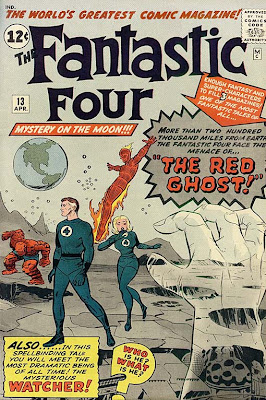 SPIDER MAN #1
SPIDER MAN #1While characters like the Hulk and Thor were developing slowly into truly iconic characters, Spider Man pretty much hit the ground running.
The premiere issue of his own book picks up soon after
Amazing Fantasy #15 left off. Uncle Ben is dead and Aunt May is having trouble paying the bills. Peter Parker, desperate to help his beloved aunt, decides to return to performing to earn the needed money.
He’s a hit, but when it come time to pay him, he asks for the check to be made out to “Spider Man” to protect his secret identity (and with a close relative to protect—it does make sense for him to have a secret identity). But no bank will cash the check without proper ID. To make matters worse, publisher J. Jonah Jameson begins his public campaign branding Spider Man as a menace. This blows any chance of Spidey getting any future performing gigs.
Spidey rescues Jameson’s astronaut son from certain death, but Jameson still campaigns against him. (Sidenote: For a long time, we’re not really given a clear motivation for Jameson’s hatred of Spider Man. This will come several years down the line and it will be a good one.)
So Spidey decides to join the Fantastic Four, figuring they must pay pretty good. But after a brief but fun tussle with them, he learns that they don’t actually accept salaries for their superhero work.
To top it all off, the villain Chameleon uses his disguise skills to frames Spider Man for stealing government secrets. Spidey manages to catch the Chameleon and clear himself, but he’s still broke and distrusted by the public.
It’s a near perfect issue. Lee and Steve Ditko dump everything but the kitchen sink on poor Peter (including a few panels highlighting his lack of friends at high school) and effectively set the tone for the book. Ditko’s art matches the feel of the character perfectly and he handles the action sequences well. We even get to meet one of Spidey’s regular villains in the Chameleon, the first of what will be the best rogue’s gallery this side of Gotham City.
 TALES OF SUSPENSE #39
TALES OF SUSPENSE #39
After a few pages to quickly introduce us to Tony Stark—brilliant weapons designer and high society playboy, the action quickly moves to South Vietnam. Tony is with an army unit, testing some miniaturized weapons he invented, but he trips a booby trap. Wounded, he’s captured by Wong-Chu, a ruthless guerilla leader. Tony knows he’s got a piece of shrapnel working its way towards his heart and only has a few days to live.
Tony and another prisoner, Professor Yinsen, are forced to build new weapons for Wong-Chu. Instead, they design a suit of armor for Tony, which will help him both defeat the enemy troops AND keep Tony’s damaged heart beating.
It’s a neat origin story, effectively told in the space of just 12 pages. The artist is Don Heck, whose work always seemed a bit stiff to me, but who still does a reasonably good job. Tony’s original suit is a big clunky thing that he continues to use until issue #48, but it actually looks like something that was indeed improvised out of scrap (which it pretty much was), so it fits the initial story. Eventually, the armor becomes more streamlined and visually interesting.
None of Tony’s supporting cast are around yet—in fact, it takes about six months before any regular supporting cast members are introduced at all. Like Hulk and Thor, Iron Man is an excellent idea for a superhero that needs a little time to develop his full potential.
That’s it for March 1963. There’s no Spider Man in April, as his book was bi-monthly to start with. But we’ll see some pretty cool stuff in the other books as Iron Man foils yet ANOTHER alien invasion (after both Thor and the Hulk fought off invaders in March), Thor encounters Loki once again and the Fantastic Four takes a trip to the moon in what has always been one of my favorite issues.






 There's also an airlock, allowing the crew to don scuba gear to carry out not just the operation (in which, by the way, the surgeon uses a hand-held laser rifle to cut the tumor loose), but also to do some of their improvised repairs. At one point, they need to access the lungs to refill their air supply. At another point, they have to clear the engine intakes of gunk picked up during a short cut through the lymph nodes.
There's also an airlock, allowing the crew to don scuba gear to carry out not just the operation (in which, by the way, the surgeon uses a hand-held laser rifle to cut the tumor loose), but also to do some of their improvised repairs. At one point, they need to access the lungs to refill their air supply. At another point, they have to clear the engine intakes of gunk picked up during a short cut through the lymph nodes.














